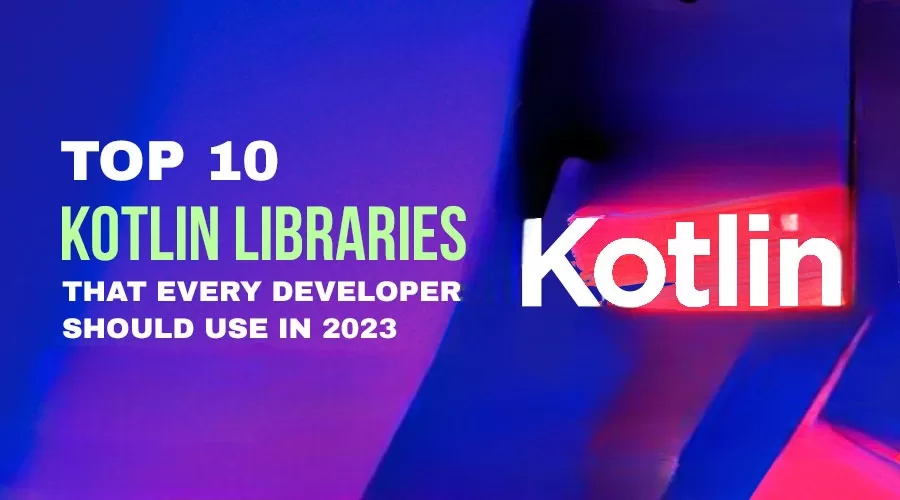Kotlin was originally designed as a JVM (Java Virtual Machine) language, and interoperability with Java is one of its key characteristics. Interfaces in Kotlin libraries make advantage of language features such as null safety, default and named arguments, and DSL (Domain Specific Language). Every year, the ecosystem of Kotlin expands. Here are the top ten Kotlin libraries that every developer should know about in 2023.
Kotest
Kotest is a testing framework. There are three components in any testing library: the testing framework, the mocking framework, and the assertion framework. You can generally combine JUnit, Mockk, and assertj. Kotest includes both a testing framework and an assertion framework. The fact that Kotest is written in Kotlin gives it an advantage. As a result, it can take advantage of Kotlin’s language capabilities, allowing you to construct more idiomatic and concise assertions. It has coroutine support, as well as the ability to leverage methods like test lifecycle callbacks, complex conditional evaluation, strong data-driven testing, and more.
Exposed
Exposed is a small SQL library that may be used in a Kotlin web project. It is quite simple to set up and utilise. It adheres to a fundamental design rule that emphasises simplicity and minimalism. So, if all you want is a row update, it’s quite simple.The library includes all of the constructs you need to take control of practically everything, from transactions to isolations. It provides DSL syntax, which makes the SQL code more flexible and easy to reason about. It includes an excellent “getting started” guide, and the documentation is improving. Sometimes you have to delve deeper to find a solution to a specific problem, such as transaction isolation or thread pool, which makes it fun to use and work with.
Ktor
Ktor is a Kotlin framework for creating asynchronous servers and clients in networked systems. It’s brief and to the point. And that is exactly how you feel when you utilise the framework. It is small and simple to set up and utilise. It has a lot less complexity, but you occasionally have to develop more things yourself, which is true of any minimal and simple library.It’s like having a mini toolbox that works flawlessly. Spring, on the other hand, is like having the entire hardware store to yourself. Everything is somewhere in there, but there is a lot more navigating to do; it’s hefty and amazing. That being said, if you require a simple application with no IoC or whatever, Ktor can handle the majority of your needs. However, if you require a large one with potential integration with Kafka, numerous databases, IoC in testing, and so on, Spring is the way to go.
Serialization Kotlinx
When you think of a JSON parser, only Jackson, Gson, or Moshi spring to mind. These are also the most commonly used parsers in Spring and Java applications. JetBrains’ Kotlin serialisation is a Kotlin-oriented, cross-platform, reflectionless serialisation library.
Koin
Koin is a DI framework written entirely in Kotlin for Kotlin developers. It is quite useful when developing a Kotlin application with the aforementioned libraries. Assume you’re developing a Kotlin web application with Ktor. To manage your controllers, services, repositories, and so on, you’d need a DI framework. This is where Koin comes in handy. Before we begin working with Koin, there are a few terms we must first learn.
DGS framework for Netflix
Netflix DGS, a library for creating GraphQL servers in Kotlin and Java, was just released. It is open-source and production-ready, as Netflix has been using it internally for some time. DGS framework works nicely with Spring Boot and is built on graphql-java. Both Java and Kotlin examples are available.
KMongo
KMongo is a library that accomplishes what Exposed provides for SQL databases for MongoDB. It supports both synchronous and asynchronous patterns and can be used with coroutines. It is a new library that is not widely used yet. This can also be used for object mapping with Kotlin serialisation. This is why it’s an excellent choice if your Kotlin programme interacts with MongoDB and you’re not using Spring Boot. If you do not utilise KMongo, you must use the MongoDB Java driver. The sample below uses KMongo with Kotlin serialisation to create, save, and retrieve an entity. It is quite simple to use and set up.
Dokka
Kotlin’s Javadoc replacement. It is a Kotlin documentation engine with roughly 2k ratings on GitHub. It supports Kotlin multiplatform and provides a plethora of tuning possibilities. KDoc is the language used to document Kotlin code. Dokka can create documentation in a variety of formats, including minimalistic HTML, Javadoc HTML, and Markdown, and recognises standard Javadoc comments in Java files and KDoc comments in Kotlin files.
Vaadin
Another web framework that supports Kotlin via the Kotlin DSL. You may immediately begin adding content to the UI class using the Kotlin DSL for Vaadin. With less boilerplate, you can concentrate solely on developing your app. Vaadin allows you to forget about the web and create user interfaces in the same way that you would with traditional Java toolkits like Swing. Because it allows you to write compact and expressive code, Kotlin is an excellent choice for designing web applications.
Mockk
Mockito is the most widely used mocking Java library. However, there may be some complications when testing Kotlin code using Mockito. Because the notNull method returns null, we cannot use it in Kotlin for a not-null parameter because an NPE is thrown. Mockito also does not support additional Kotlin language features. As a result, using a library built in Kotlin, specifically for Kotlin, is the best solution. Mockk naturally allows mimicking objects, enums, extensions, top-level functions, coroutines, Nothing, chained calls (including hierarchical ones), private methods, and constructors. It, like Mockito, enables annotations, partial mocks, mocks that implement multiple interfaces, and method argument capture.


 WhatsApp us
WhatsApp us